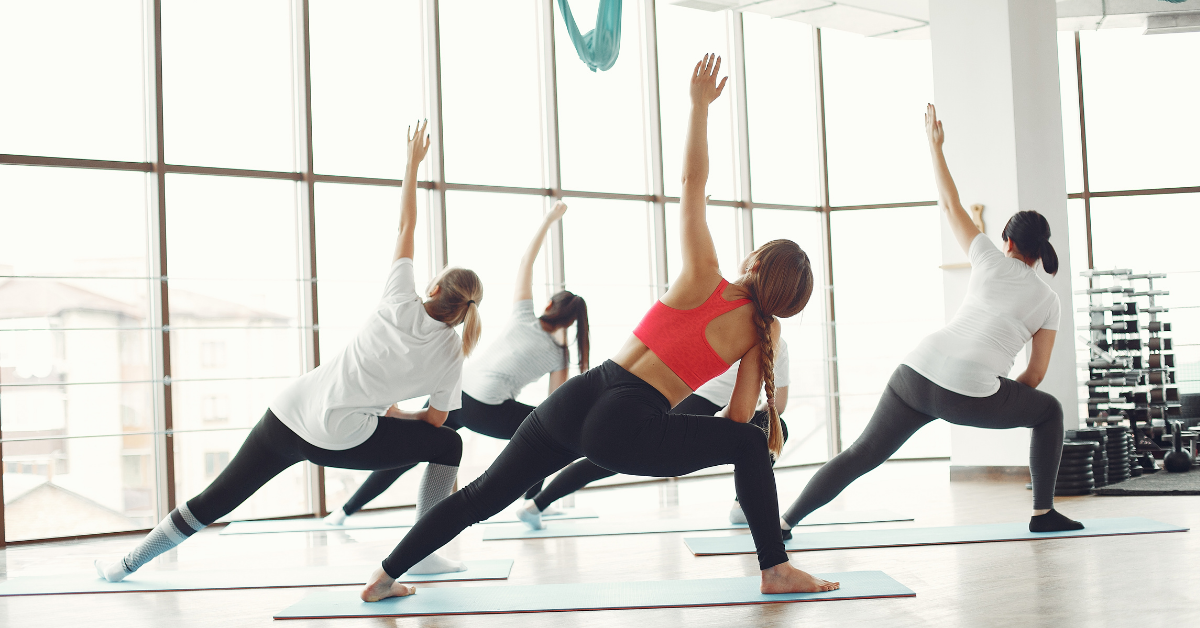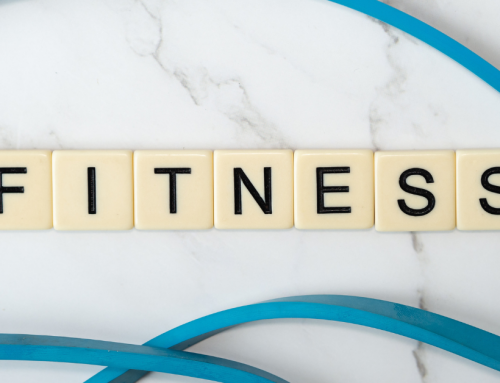The Importance of a Fitness Routine: How to Make Fitness Fun
Pure Motivation Makes Fitness Fun
The accomplishment of settling on a decision to change your lifestyle and reset your dietary and fitness goals is incredible. Give yourself a pat on the back. Now for the important part, the fitness routine; this is how to make it fun!
Getting into a gym routine entails having a deep love and appreciation for the process of healthy eating, sensible exercise, prioritizing sleep, and all the rest. You should not attach your happiness and self-esteem to the outcome. Dieting and stressing about the scale every day will increase your opportunity to feel disappointed.
The Skinny on Impossible Dieting
The disastrously flawed foundational premise of the diet industry is that you can reduce excess body fat by disciplining yourself to restrict dietary calories, then burn off excess body fat during strenuous exercise. If you take on this challenge in a carbohydrate-dependent state, you don’t lose fat very well, if at all. Instead, you experience fatigue from insufficient calories, combined with chronic exercise patterns.
Our primal genes perceive this combo to be a matter of life and death, and they respond with emergency production of glucose via gluconeogenesis. This process that is triggered temporarily alleviates your fatigue by providing a stable fuel source to your sugar-addicted brain and muscles.
Ultimately you end up burned out from chronic overstimulation of the fight or flight response and the fatiguing effects of suboptimal nutrition, i.e. a synthetic shake for breakfast and lunch, followed by a high-carb, nutrient-devoid dinner. Does this sound familiar? If it does, it is time to get off the hamster wheel and take a serious shot at a new way of dieting.
Moving = burning fat = the likes

Low carb/keto eating patterns, combined with comfortably paced movement and strictly aerobic cardio sessions, make you good at burning fat around the clock. Some facts are irrefutable.
Getting started on a strict diet can feel daunting. You may have feelings of resentment about your decision to clean up your act when it comes to your beloved food. But this is about more than food and fitness, balance, longevity, and energy are some of the first things that come to mind.
Dieting should never feel like a second job. Of course, you will be intentionally changing the way you eat, how much you eat, and redefining good and bad foods, but it should not feel so hard! If you are managing yourself well, and balancing your mental health alongside your physical health, your efforts toward food will have a great potential at sticking.
Your True Goals When You Return To The Gym
Getting back to the gym can be intimidating. Maybe you don’t know where to start. You have an idea of what you want your body to look like, but you have no idea what muscles to strengthen in order to achieve that goal.
Or maybe, you just want to feel stronger overall, have better balance, boost your metabolism. Maybe get through a few flights of stairs without going breathless, or make it through a 5k.
Whatever your idea of fitness is, you don’t have to feel overwhelmed, you got this!
HOW TO MAKE FITNESS FUN
1. Talk to someone who works at the gym.

Take the free assessment session that your gym offers. Get all your numbers written down by a personal trainer. Know your body fat, body composition, flexibility, and create your first goal.
Starting out is going to cause soreness at first, especially if you haven’t worked out in a long time. Use those muscles!
Respect Your Current Ability Level
If you are worried about the weight-bearing risks of running sprints, choose a low-impact option such as swimming, stationary cycling, elliptical, or other cardio machines. Maybe that can be your first goal: to run a sprint.
Realize that “all-out” doesn’t mean to the point of collapse; all your efforts should be under control with good technique preserved.
Avoid painful situations, and use self-help YouTube videos to demonstrate good form and technique when performing a technical move (deadlift or squat). The last thing you need when you are just starting off is an injury, know your limits, but also ignite your inner beast.
2. Try a group exercise class.
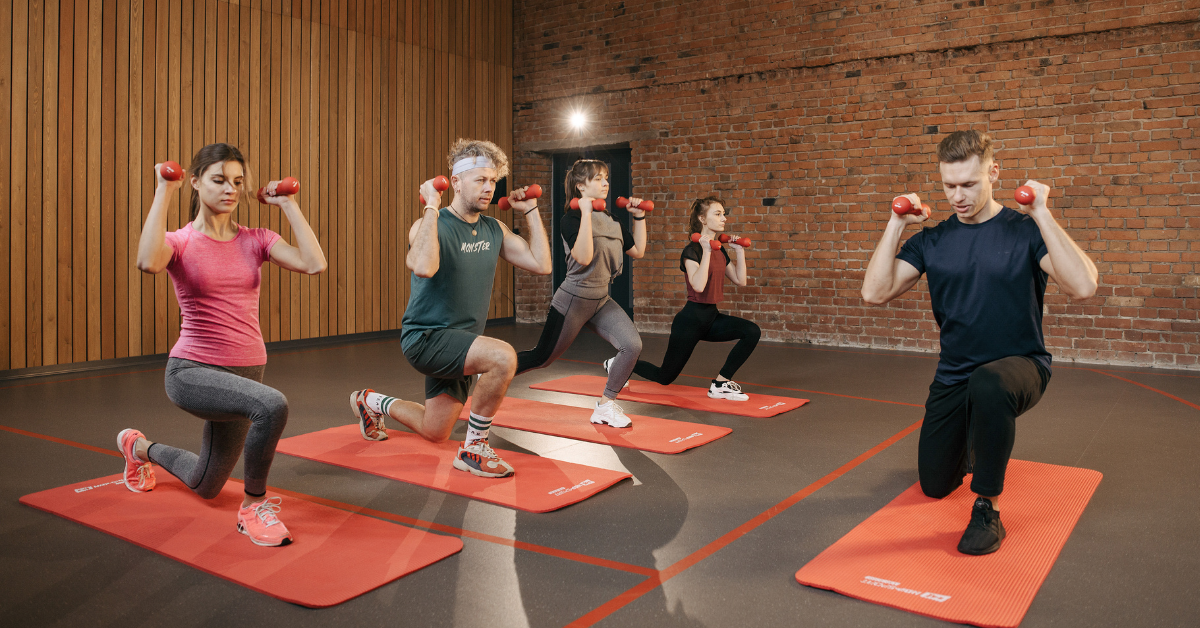
These are fun, sometimes entertaining, and motivational to have others right next to you doing the same thing! Many individuals will avoid group fitness because they are scared of what others will think of them, or they think the instructor is too difficult. Sometimes people avoid group fitness simply because they don’t feel comfortable in their own skin. My best advice to a person that is just starting out in the fitness world is, to take a class, meet people, talk to the instructors, introduce yourself.
You are creating accountability for yourself by doing this, on days when you don’t feel like going to the gym; you may find yourself showing up to that group fitness class because your peers expect you! The group will miss your presence, and your presence is a present, don’t forget that!
Thoroughly Warm Up and Cool Down
Warm-ups and cool-downs not only prime the muscles, tendons, and joints but also protects you from injury and ease the stress impact of the workout. Warming up excites your central nervous system for explosive action.
Before your workout, you should perform slow-paced cardio until you break a slight sweat, feel your joints lubricate, and experience sharpened psychological focus. Spend at least five minutes doing a gentle warm-up, then some dynamic stretches, not static, preparatory technique drills and “wind sprints” for about ten minutes before you commence the hard stuff. Your total warm-up should take about fifteen minutes.
For your cool down, make sure you have stopped sweating and that your breathing returns to normal before you stop moving. Try to remain active and mobile for the remainder of the day to help speed recovery.
3. Look up a plan.
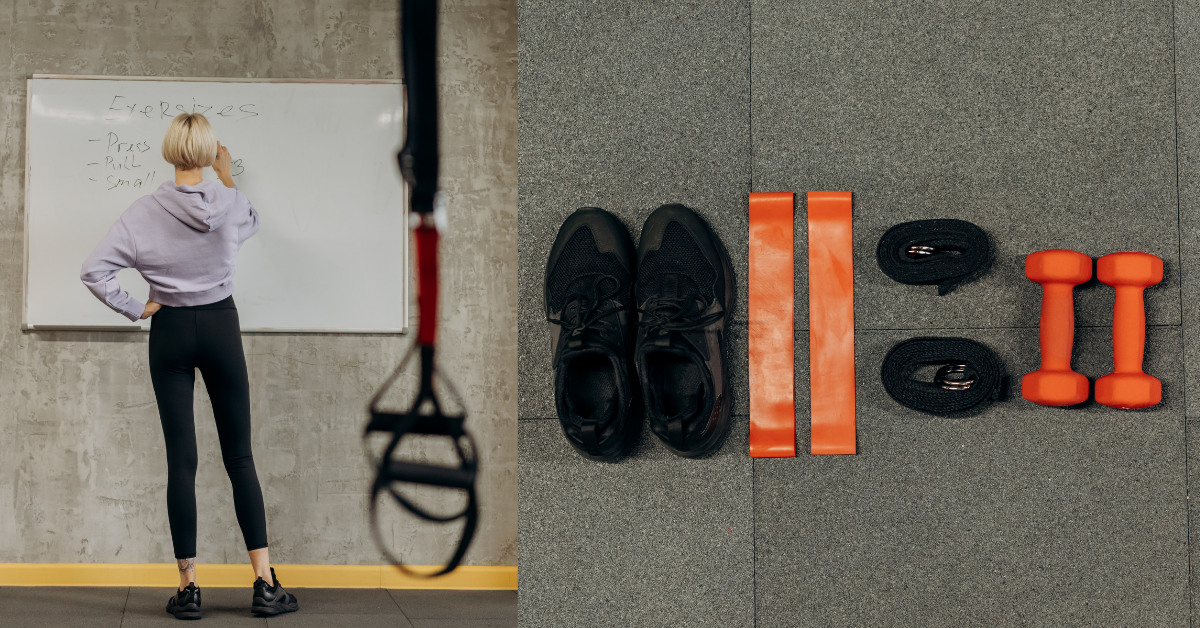
Grab a notebook and look up a 5 day split workout plan. Write down what you’re supposed to be doing when you visit the gym. This will force you to try new things, research, and learn the names of exercises and the groups of muscles that you are working on.
Consistent Quality Efforts
A little effort goes a long way when it comes to sprinting. Each interval should be similar in both measured performance and perceived effort level. High-intensity bouts of effort will deliver maximum results when it comes to lifting heavy things and your cardio performance.
If you start to notice compromised form or muscle tightness/pain arising owing to fatigue, it’s time to stop the workout. This concept is very important to grasp because it requires a transition away from the “no pain, no gain” mentality.
Give it your all, but avoid exhaustion at all costs.
4. Choose a form of fitness that sparks your interest.
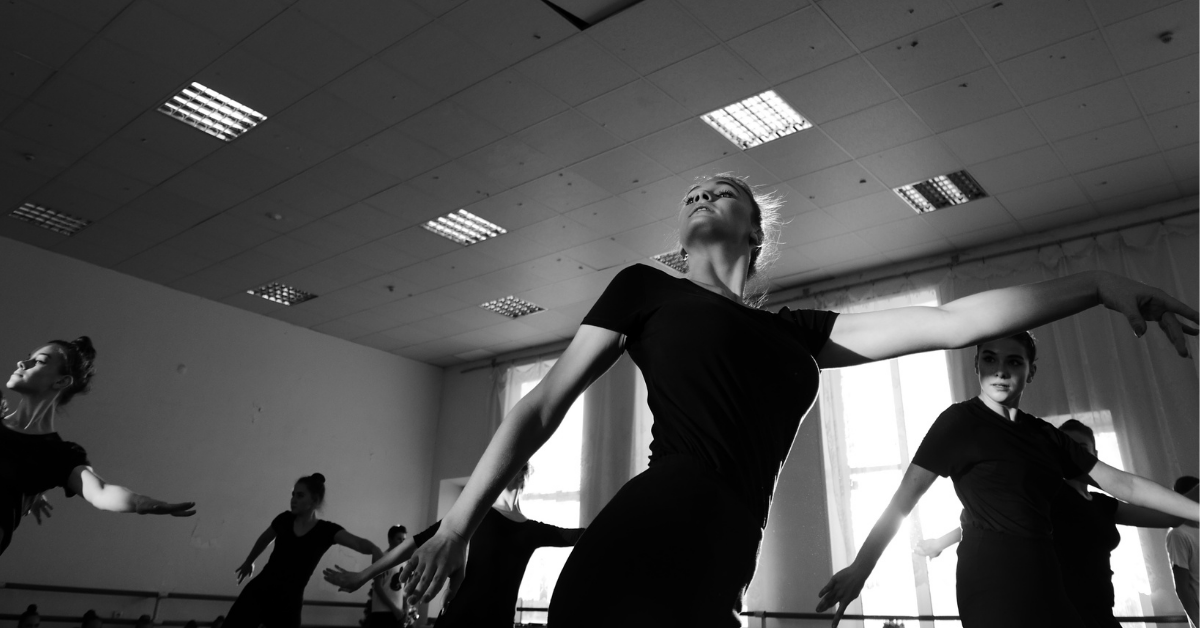
Maybe you want to dance and move your hips. Or maybe you like to stretch and bend to meditative music in a hot yoga class. Maybe you want to build strength but also want to have fun doing it. Maybe you just want to have one on one conversations with a trainer as they teach you how to work out in the most efficient way.
Connections Create Quality
You may be surprised by the amount of inspiration you will receive from that yoga instructor. Finding your inner peace can help relieve physical stress and mental stress from your body. If you decide to connect with a community of people that participate in group fitness, you will naturally start to form friendships. As well as build relationships and have accountability partners.
There is nothing better than laughing and gossiping with your friend as you perform a workout. Also, your personal trainer can share a wealth of knowledge about themselves and how to create strength.
5. Choose an outside activity that is with a friend like playing tennis, pickleball, volleyball, golf.
You don’t have to kill yourself in the gym every time you want to get a workout in.
This is about movement.

A Little More About Exercise
EXERCISE
Widening your perception of what exercise is and how it should be performed, frequency, intensity, and recovery are based on popular culture influence. The Instagram bodybuilder that posts perfect pictures of a stunning physique may have a horrible relationship with food. The clean eating addict may have a lot of negative feelings about food and may also shame themselves about indulging in a high-fat item occasionally.
Exercise is not a punishment for eating something that is “not clean” or “bad”.
If you are treating exercise as a form is buying calories for a binge that weekend, then you are doing it all wrong. Building a strong healthy relationship with living an active lifestyle and choosing foods that make you feel good takes time. The learning curve is not always perfectly sloped upwards, sometimes the road to success is windy and bumpy.
Walking for exercise delivers the aforementioned metabolism benefits. It is a great way to de-stress and even to get a fresh perspective for problem-solving. Your favorite fitness pursuits are a great way to blow off steam. Also, counterbalance the periods of inactivity in-home and at the workplace. Besides going to the gym religiously, finding time for tennis, pickleball, walking, shooting hoops, riding your bike outside to a new town, you will accomplish a lot. You will enjoy the benefits of fresh air, open space, and nature.
FUN
Never forget that this lifestyle transformation stuff is supposed to be fun. Instead of stressing about daily carb totals or looking like a social outcast at the next dessert club gathering, view your keto journey as an opportunity to try some interesting new foods. Engage in spontaneous and intuitive fasting efforts, and perhaps serve as a role model for others interested in transformation.
As far as fitness is concerned, consider that wearing high-tech biofeedback gadgets, keeping precise workout logs, and being consistent with your schedule is highly overrated. Understand that your inclination to be hyper-connected is not a character flaw; it’s a hardwired genetic attribute that keeps us vigilant for changes in our environment that can affect our safety.
Yep, the dopamine burst we get from jumping to respond to a text message buzz today is akin to our ancestors’ urgent reaction to a rustling in the bushes.
Consequently, it’s important to be mindful of your programmed reactions to digital stimulation. And learn to practice the discipline of powering down. When you power down your distracting devices, you open up an opportunity to make interactions with your partner, children, or friends to the next level. You are giving them an opportunity to connect with the real you. Also making eye contact, being creative in your thought process, and indulgent in intellectual conversation.
A friendly reminder to always find gratitude in all of this hard work you are putting forth. There is a methodology of living that I like to share with people.
This method is about staying gritty and also finding grace as a human.

Finding your reason to continue on this journey is important. Many practice gratitude journaling. You may find the idea to be corny or impractical. But it is a very beneficial practice for your mental state.
Picking a time of the day where you take a couple of minutes to write down what you are grateful for is cathartic. It’s a great counterbalance to the shared human tendency to complain.
You can write about anything in this journal: the awesome party last night, your new car, the warm weather, the health of your children, the park by your neighborhood. Don’t get stuck telling your sob story. As well as listening to others’ sob stories like broken records.
Be the light in the room and the conversation changer.

